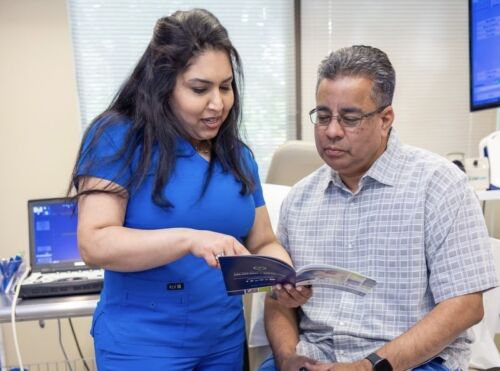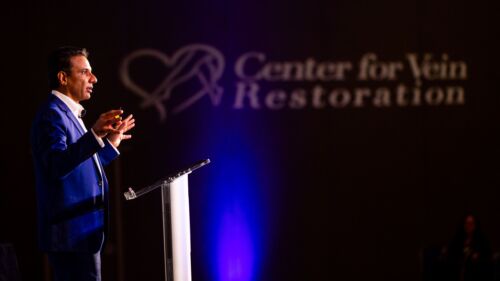We spoke to Dr. Dillon about the CVR telemedicine program. These are his answers to our questions:
What is the best use for telemedicine?
Telemedicine is a convenient and effective means of offering healthcare services to patients who cannot have traditional in-person visits with their doctor. The adoption of telemedicine in the medical community and acceptance by the general public were already on the rise when the COVID 19 pandemic started. Not surprisingly, telemedicine quickly assumed a prominent role in the delivery of healthcare during the lockdown.
Now, hopefully most medical practices have returned to seeing patients back in their offices. Even so, telemedicine will continue to serve as a valuable adjunct and/or alternative to in-person appointments.
What types of technologies are used for telemedicine?
The term “telemedicine” or the broader category of “telehealth” implies that the encounter between doctor and patient is only over the phone. Today, we have robust, secure HIPAA compliant video technologies, we can closely mimic the experience of a non-procedural office visit. These platforms are typically device independent, meaning patients can connect using a wide variety of phones, tablets, laptops, or desktop computers.
What does a CVR vein health telemedicine visit look like?
CVR offers two types of virtual care. Our telemedicine service involves virtual visits where the patient is usually at home (but sometimes at work or other non-clinic locations). The CVR provider communicates with the patient through a video connection. If the patient doesn’t have access to a video-capable device, then we connect through a phone call. This type of appointment can be used for established patients who have already been seen in the office and are subsequently eligible for a virtual follow-up.
We also offer free screening appointments. These virtual visits are meant to triage patients seeking vein care. The provider can appropriately direct those who may only have cosmetic concerns versus prospective patients reporting symptoms more consistent with medical vein disease (i.e., venous insufficiency).
The other type of care we offer is that of "Virtual Providers." In this case, the patient is still physically seen in one of our clinics and telemedicine fills in for the provider who would usually be there. This capability means we don’t have to limit schedules or close clinics in the event of staffing shortages.
Do all CVR physicians offer telemedicine?
The demand for telemedicine is growing rapidly, and it’s certainly possible that our office-based clinicians may participate to some degree in the future. Currently, the telemedicine service is comprised of a team of dedicated, highly trained and experienced advanced practice providers along with supervising board-certified physicians.
This structure allows for a focused approach and enables us to optimize the clinic staffing and scheduling by virtually seeing those patients who are eligible for telemedicine. Telemedicine thereby opens up office appointment capacity for patients who genuinely need an in-clinic visit.
Do you have tips for a great telemedicine visit?
- We recommend that our virtual patients conduct the encounter from a quiet, private location with access to a reliable and secure cellular or internet connection.
- If the patient does not speak English, it's helpful if a translator accompanies them; otherwise, we can provide a translation service.
- It is a good idea to have some notes available for reference. Most patients presumably know what their concerns are but can sometimes forget to mention or inquire about things during the visit.
- If a patient has a history of previous vein treatments, having that information handy is very helpful.
Do health plans cover telemedicine?
At the current time and for the foreseeable future, telemedicine services are covered by insurance. When our patients are scheduled for their appointments, we obtain their insurance information so we can verify their benefits and coverage.
In your opinion, how will telemedicine change healthcare in the future?
The future of telemedicine looks really promising. I think it will be a while before holographic doctors become the norm. Still, we can expect continued refinements in existing communications technologies, which will help narrow the perceived gap between the clinical value of an in-person versus virtual evaluation.
The telemedicine team at CVR is continuously monitoring ongoing advancements in the field, and actively incorporating them into our practice. Our goal is to continue to offer the best experience and best patient care possible.
Schedule a telehealth appointment
Are you concerned that your painful, itchy, swollen, heavy feeling legs may be caused by vein disease? Are you a CVR patient needing a follow-up appointment, or are you unsure if your symptoms are considered cosmetic or are a sign of medical vein disease? Telemedicine might be right for you!
Schedule a call or video chat with one of CVR’s expert providers today. Visit us online
or call 240-965-3915 for more information or book an appointment.

 About Vein Disease
About Vein Disease
 Spider Veins
Spider Veins
 Varicose Veins
Varicose Veins
 Vein Disease Treatments
Vein Disease Treatments
 Treating Spider Veins
Treating Spider Veins
 Treating Varicose Veins
Treating Varicose Veins
 About Us
About Us
 Patient Resources
Patient Resources
 Physician Resources
Physician Resources


